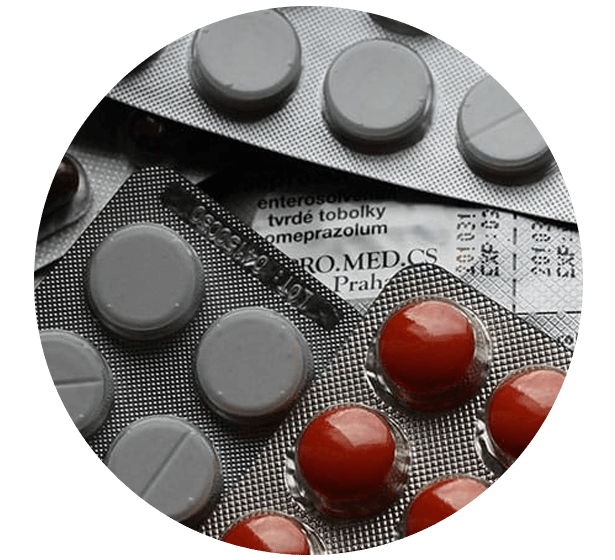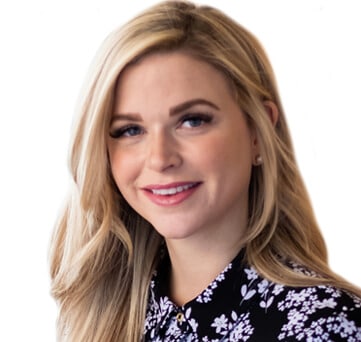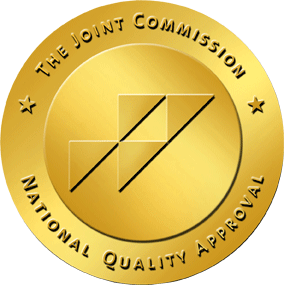Prescription Drug Addiction Treatment

Prescription drug abuse is a serious problem that contributes to thousands of drug overdose deaths every year. Abusing prescription drugs like opioids can have long-lasting physical and mental repercussions. The gradual process from use to abuse with prescription drugs is insidious and oftentimes subtle in nature. For instance, prescription medications given to a patient recovering from a broken bone may lead to addiction, long after the bone has healed. In cases like these, there’s often underlying factors that put the individual at increased risk for addiction such as:
- Trauma
- Mental health disorders
- Genetic predisposition to addiction
- Excessive stress
- Relationship issues
Commonly Abused Prescription Drugs
There are three categories of prescription drugs which are most often abused:
- Opioids to treat pain.
- Stimulants to treat attention deficit disorders and narcolepsy.
- Depressants to help anxiety, stress, and sleep disorders.
#1 Opioids
Painkillers like opioids have been around for over 100 years. They’ve steadily risen from needed use to abuse and addiction. This is partially due to human longevity increasing, and with it, more patients with chronic or specific pain management needs. Additionally, people addicted to heroin or morphine may turn to forms of opioids in painkillers when they can’t get heroin or to complement their use. These often include:
- Vicodin
- Norco
- Methadone
- Percocet
- OxyContin
- Fentanyl
Vicodin and Norco
These prescription medications are designed specifically to treat moderate to severe pain. They contain hydrocodone and acetaminophen. Hydrocodone is classified as a narcotic while acetaminophen is a mild pain reliever (over-the-counter Tylenol.)
Vicodin and Norco are used for patients experiencing pain from medical issues, surgeries, and accidents. Vicodin and Norco are taken orally by prescription. To get high, abusers of these drugs crush the pills into a powder to snort it or create a mixture for intravenous drug use. This can lead to serious problems because the narcotics enter the brain at a much faster rate. Sometimes the users mix Vicodin or Norco with other prescriptions, which increases the risk for overdose and death. While not addictive, excess acetaminophen can cause severe liver damage, internal organ shut-down, and death.
OxyContin (Oxycodone)
Oxycodone is used medically to treat moderate to severe pain, such as cancer pain. It’s not mixed with acetaminophen like other painkillers and acts as a complete and pure narcotic. Drug seekers will abuse OxyContin by mixing the drug or using it purely by snorting it. Because of the 100% narcotic substance, OxyContin can quickly impact your brain chemistry.
Fentanyl
Fentanyl is the active ingredient in brand name painkillers such as Fentora, Duragesic, and Actiq. It’s typically prescribed by medical professionals when other narcotic painkillers are no longer effective. Fentanyl is given to patients with severe pain issues from conditions like cancer. They may have developed a tolerance to Vicodin or OxyContin.
Unlike the other painkillers, Fentanyl is transmitted into the body via a shot or patch. People sometimes abuse it by scraping the patch and injecting or swallowing the gel that’s inside. Needless to say, any transdermal medication which has a high narcotic level has severe consequences when abused. Though the medication has been around since the 1960’s, this synthetic opioid causes thousands of deaths in the US every year.
#2 Stimulants
Adderall
Adderall is a central nervous system stimulant used to treat attention deficit disorder, specifically with the subcategory of hyperactivity. The most active ingredient is amphetamine, commonly referred to as “speed.” It reacts on the brain as a cognitive enhancer and increases energy for people who don’t have ADHD, which is why some people take it for non-medical reasons.
Ritalin
Ritalin was at one time the only medication prescribed for young people who were “hyperactive.” It contains amphetamine and is orally ingested in tablet form. The effects of Ritalin are an intense focus and euphoria in high doses. Because of its properties, Ritalin has also been abused by people who want to lose weight where dieting has failed. Ritalin is often not seen as abuse but rather justified by the user, who sees it as a necessary component to get through a challenge.
#3 Depressants
Xanax
Xanax is prescribed for people who’ve been diagnosed with panic disorder. It’s a fast-acting, highly addictive medication which can relieve panic attacks. It can also send an individual with a substance use disorder into a fast state of chemical brain change. The active ingredient is alprazolam. Xanax is more potent than Valium, another popular benzodiazepine, or “benzo.” Some people may take too many benzos and mix it with other drugs or alcohol, putting them at high risk for overdose.
Valium
Valium is another fast-acting depressant that’s used to treat anxiety disorders. The active ingredient in this medication is diazepam, which is a benzo. Mixing valium with other substances such as stimulants, painkillers, and alcohol can lead to accidental overdose before you realize you’ve taken too much.
Lorazepam (Ativan)
Lorazepam may be prescribed for patients experiencing moderate to severe anxiety and have difficulty sleeping. Use should be closely monitored by medical staff. Somewhat controversial, some physicians don’t prescribe Ativan unless other medications don’t work. Ativan is a medication that has a high street value, making it a drug that is sold to buy other illicit drugs. Ativan on its own can be addictive as well.
Clonazepam (Klonopin)
Klonopin is a benzodiazepine medication prescribed for people with moderate to severe anxiety and prone to panic attacks. It’s also a fast-acting drug which produces chemical changes in a short time. Mixed with opioids, Klonopin has caused coma, respiratory ailments, hallucinations, rapid mood swings, and death.
Signs of Prescription Drug Addiction
More people are living with a disease and chronic pain that get relief with prescription drugs. These include conditions like:
- Asthma
- Diabetes
- Cancer
- Heart problems
- HIV
- High blood pressure
People with these issues would endure undue suffering without access to prescription drugs. However, once prescribed pain relievers can be difficult for some people to stop taking, even when the physical pain is gone. Thousands of people around the world have grown dependent on painkillers and have gone to great lengths to get them.
Dependence on drugs happens when your brain gets used to a substance and cannot function without it. The neural pathways become rewired to seek out the chemical need for drugs or alcohol. This causes reactionary responses that go beyond willpower or intellectualizing the problem. You know you should stop but cannot do so without medical and behavioral treatment because of the pleasure-seeking chemicals your brain creates.
There are different categories that define drug dependence, often starting with casual use, advanced use, and progressing to full-blown addiction. When you develop a tolerance to the substance, it’s often the first sign that you’re developing a drug addiction.
The addiction progression sometimes looks like the following:
- You develop a tolerance, using increased amounts of drugs or alcohol to feel the same effects formerly given by smaller doses. You may begin “chasing the high” by using more drugs and more frequently.
- You continue to use drugs despite negative consequences like legal troubles, job loss, financial problems, strained relationships, or even drug overdose.
- Drug use takes front and center in your life. Nothing else matters and you will go to any length to get more drugs.
Signs that your addicted to prescription drugs include:
- Going to different doctors to obtain more prescriptions.
- Taking more prescription drugs that are prescribed by your doctor.
- Mixing prescription drugs with alcohol or other drugs.
- Ruminating about how you’ll get more drugs and when you’ll use them again.
- Anxiety about running out of prescription drugs.
- Experiencing withdrawal symptoms when you go without the drugs.
- Suffering financial, relationship, or job loss due to drug use.
- Changes in weight, eating habits, and sleep patterns.
- Feeling like you need the drug to feel normal or function in everyday life.
- Stealing prescription drugs from others or buying them on the street.
- Crushing pills to snort them or liquifying them to inject intravenously.
- Loss of interests in people and activities you used to find enjoyable.
How Do You Treat Prescription Drug Addiction?
Some people think that drug rehab centers are only for illegal drug users or alcoholics, not those who’ve abused prescription drugs. That is not the case. An addiction to prescription drugs can be just as serious as a heroin addiction or alcohol addiction.
When you’re struggling with prescription drug addiction, a treatment center is a life-saving option. You need to go through detox and withdrawal under the care of professionals who specialize in it. At a detox center, medical staff can keep you safe and ease withdrawal symptoms. They know the appropriate taper schedules for your individual needs and medications that can help you through the detox process.
The withdrawal period may be lengthy. Some central nervous system drugs cause seizures if abruptly ceased, while opioid withdrawals of any form can make you quite ill. A professional detox program will use a combination of techniques to help you stabilize.
Following detox, you’ll begin the real work of recovery in our prescription drug treatment program. This includes getting to the core reasons why you feel the urge to abuse drugs and learning healthy ways to cope with difficult feelings and experiences. Some of the approaches in a prescription drug addiction treatment center may include:
Individual Therapy
You’ll work one-on-one with a therapist to explore emotions, thoughts, and experiences that contribute to addictive behaviors. Your counselor will likely draw on a number of proven addiction treatment therapies like cognitive behavioral therapy, dialectical behavior therapy, and motivational interviewing.
Group Therapy
Sharing with and hearing from peers who share similar struggles can feel transformative. It can help heal wounds of isolation, shame, rejection, and guilt that often accompany addiction. You’ll learn to be more authentic in relationships and how to have healthier connections with people.
Holistic Therapy
Many prescription drug rehab centers use a blend of both traditional and alternative therapies. This helps you heal not just the mental wounds of addiction, but also the emotional, spiritual, and physical ones. Holistic approaches include activities like yoga, art therapy, music therapy, fitness, psychodrama, and trauma therapies such as EMDR.
Family Therapy
Addiction is a family disease. All members of the family system are impacted by it. Family therapy helps you and your loved ones talk through difficult topics and learn better ways to communicate and support one another.
Psychiatry
Many people who struggle with alcohol or drug abuse have underlying mental health conditions. This is known as a dual diagnosis or co-occurring disorders. Abusing prescription drugs or other substances can be a way to self-medicate psychiatric symptoms. In prescription drug abuse treatment, you may visit with a psychiatrist to determine if you have any underlying mental health disorders and if medications could help you manage their symptoms.
Medication-Assisted Treatment (MAT)
Prescription opioid and heroin addiction treatment often includes medication-assisted treatment. These are medications that attach to your opioid receptors and can help ease withdrawal symptoms and cravings so you can focus better on recovery. MAT works in combination with therapy, sober peer support, and healthy lifestyle changes.
Aftercare Planning
Having support in place when you leave prescription drug addiction treatment is critical for relapse prevention. Back in everyday life, you’ll face many of the same struggles and triggers as before. An aftercare plan helps you manage triggers, get support from others, and stay accountable in recovery. Common components of an aftercare plan may include:
- Individual therapy
- Family therapy
- Psychiatry and medical appointments
- 12-step groups
- Treatment center alumni programs
- Sober living residence
Does Insurance Cover Prescription Drug Addiction Treatment?
Insurance benefits for drug addiction treatment rehab are covered at least partially by most insurance providers. There are laws in place that require many insurance providers to provide similar benefits for behavioral health as they do for physical conditions. Some cover certain types of treatment higher than others. For example, benefits for outpatient treatment may be covered at a higher level than inpatient treatment.
If you’re unsure about your insurance coverage for prescription drug treatment, we can help. Call us for a free insurance verification check. We’ll contact your provider and work with them directly, so you understand exactly what is covered and any potential out-of-pocket costs.
Prescription Drug Addiction Treatment at Vogue
Vogue Recovery Center treats prescription drug addiction using evidence-based and engaging approaches. We’ll customize a treatment plan specific to your individual needs and preferences. This way you know that you’re getting the most out of your time in treatment because it’s relevant to your specific situation. You’re not just a number going through a predetermined process.
Our treatment facilities are home-like and welcoming. You’ll be cared for by addiction treatment staff who are passionate about their work and your well-being. Other clients in addiction treatment will quickly become your close-knit support system, some may even become your lifelong friends.
We offer a full continuum of care, so you can ease the transition back into everyday life. These include:
Don’t Wait to Get Help
We understand what you’re going through, and we can help. Vogue Recovery Center has drug and alcohol addiction treatment programs in Arizona, Nevada, and California. We accept most insurances and offer varying lengths of stay. Our admissions staff are here to answer your call 24 hours a day. There’s a better life beyond addiction. Call us.

Medically Reviewed by Jessica Elbe, LCSW


